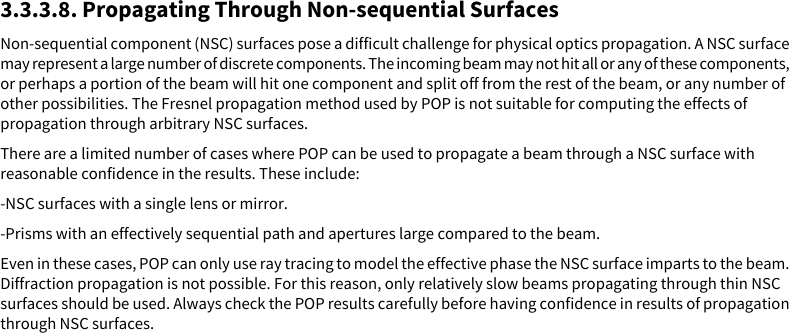I intend to model the diffractions of some structures more complex than a double-slit. One option is using non-sequential mode Source Diffractive, I can directly build these structures. Another option is using Physical Optics, I need insert a non-sequential component with all these these structures in it.
Which is better??? Thank you for help.




